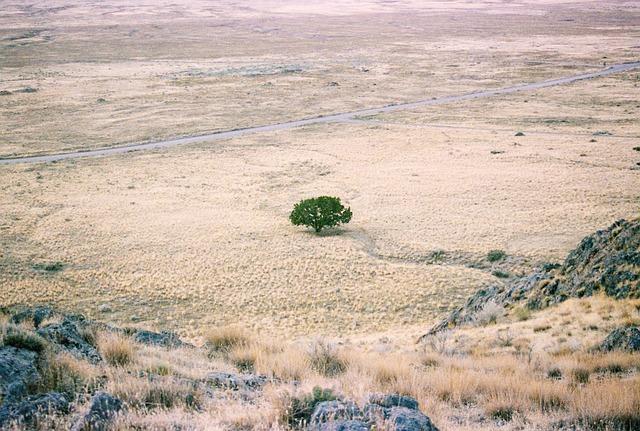In fresh years, the profound affects of weather exchange have transform more and more glaring, manifesting in a lot of environmental crises that threaten international meals safety. One placing instance is the 2007 drought that affected the Lesotho-South Africa area, a catastrophic match that underscored the vulnerability of agricultural methods to weather variability. the drought no longer best devastated native economies but in addition laid naked the intricate hyperlinks between weather exchange adn meals lack of confidence.As researchers discover the multifaceted repercussions of this climatic phenomenon, the case of Lesotho and South Africa serves as a an important lens in which we will read about the broader implications of weather misery on meals availability, dietary requirements, and the livelihoods of tens of millions.Drawing upon findings from the fresh article printed in Medical Stories on Nature.com, this investigation delves into how climate-induced demanding situations have exacerbated present vulnerabilities and disrupted meals manufacturing in a area closely reliant on agriculture, in the end illustrating a urgent want for adaptive methods within the face of an unsure climatic long run.
Exploring the Intersection of Local weather Alternate and Meals Lack of confidence in Southern Africa
The connection between weather exchange and meals lack of confidence is especially pronounced in Southern Africa, the place excessive climate occasions have intensified the vulnerability of agricultural methods. The 2007 drought in Lesotho, exacerbated through climatic shifts, supplies a poignant case learn about illustrating how converting climate patterns can lead to dire penalties for meals availability. Emerging temperatures, abnormal rainfall, and greater frequency of droughts are changing into the brand new norm, impacting no longer best crop yields but in addition cattle well being and water sources. This cascade of results highlights how intertwined thes problems are and emphasizes the desire for pressing, coordinated responses to mitigate the affects on meals safety.
Addressing the demanding situations posed through weather exchange calls for a multi-faceted method. Stakeholders will have to believe a lot of methods, together with:
- bettering agricultural practices to fortify resilience towards weather variability.
- Making an investment in water control methods that may face up to drought prerequisites.
- Enforcing early caution methods to are expecting and reply to climatic extremes.
Additionally, governmental insurance policies will have to prioritize sustainable expansion and neighborhood engagement, making sure that native farmers are supplied with the data and sources important to adapt to a converting weather. Through spotting and addressing the basis reasons of meals lack of confidence inside of the context of weather exchange, Southern Africa can construct a extra resilient long run.
Figuring out the 2007 Lesotho-South Africa Drought: Reasons and Penalties

The 2007 drought in Lesotho and South africa emerged as a necessary climatic match that highlighted the interaction between weather exchange and regional meals safety. A number of key elements contributed to this critical drought, together with:
- greater temperatures: Emerging moderate temperatures led to lowered moisture ranges within the soil.
- Erratic rainfall patterns: Altered precipitation patterns resulted in inconsistent water provide, affecting crop manufacturing.
- Deforestation: Human actions like logging exacerbated the vulnerability of the ecosystem to drought prerequisites.
- weather variability: Lengthy-term adjustments in weather patterns contributed to excessive climate occasions, together with the extended dry spells.
The penalties of the drought had been devastating, specifically for rural communities that depend closely on agriculture for thier livelihoods. The have an effect on used to be multifaceted and integrated:
| Penalties | Description |
|---|---|
| Meals Lack of confidence | Declining crop yields resulted in vital shortages of very important meals provides. |
| Financial loss | The agricultural sector suffered immense monetary setbacks,resulting in greater poverty charges. |
| Well being Problems | Dietary deficiencies become common, specifically amongst prone populations. |
Figuring out those reasons and penalties is an important for enforcing efficient weather adaptation methods and making sure meals safety in the face of long run climatic demanding situations.
The Affect of Drought on Agricultural Productiveness and Meals Provide Chains

The critical drought that struck Lesotho and South Africa in 2007 serves as a stark instance of how weather exchange can exacerbate agricultural demanding situations, considerably affecting meals manufacturing and provide chains. Extended dry prerequisites lowered crop yields, as essential water sources for irrigation dwindled, resulting in common meals shortages and greater costs. Farmers confronted really extensive difficulties adapting to those unanticipated climate patterns, which disrupted no longer best native agriculture however additionally regional markets reliant on stable meals go with the flow. the results had been specifically harsh on smallholder farmers, who had been already prone because of restricted get admission to to sources and generation.
This disaster illuminated the interconnectedness of agricultural productiveness and meals provide chains, highlighting a number of important elements:
- Crop failure: Drought immediately influenced the quantity of arable land that would yield enough produce.
- Marketplace instability: Fluctuating meals costs dislocated provide chains, leading to greater meals lack of confidence.
- rural poverty: The overpowering have an effect on on farmers exacerbated present socioeconomic disparities.
As we read about the lasting implications of the 2007 drought, it turns into transparent that addressing the vulnerabilities in agricultural practices and embellishing adaptive methods are an important in our combat towards climate-induced meals lack of confidence.
Susceptible Populations: Who Is Maximum Suffering from Meals Lack of confidence?

Meals lack of confidence disproportionately affects quite a lot of prone populations, specifically those that already face social, financial, or environmental demanding situations. Amongst those teams, kids, the aged, low-income households, and rural communities are specifically at possibility. They continuously sufficient lack get admission to to enough and nutritious meals due to monetary constraints, volatile employment, or under-resourced meals methods. Moreover,weather exchange exacerbates those problems,as excessive climate occasions,comparable to droughts,disrupt agricultural manufacturing and provide chains,making meals much less obtainable and extra dear.
the implications of meals lack of confidence prolong past mere starvation; they have an effect on general well being and well-being, leading to malnutrition, persistent illnesses, and impaired cognitive construction specifically in kids. Susceptible teams face further demanding situations, as they won’t have the method to conform to converting meals landscapes. As a notable instance, indigenous populations continuously sufficient rely on conventional agriculture, which is more and more threatened through weather instability. To successfully deal with this disaster,it is very important to believe elements such as financial standing,geographic location,and social toughen methods in formulating insurance policies geared toward fostering meals resilience and making sure that every one communities have get admission to to strong meals sources.
Coverage Suggestions for Mitigating Local weather exchange Results on Meals Safety

To successfully deal with the escalating threats posed through weather exchange on meals safety,it is certainly important to put in force a multi-faceted method that engages each native communities and international entities. Bettering resilience inside of agricultural methods is key. This may be completed throughout the adoption of climate-smart agricultural practices, comparable to:
- Enforcing crop rotation and diversification to support biodiversity.
- Selling sustainable irrigation tactics that maximize water use potency.
- Making an investment in analysis to increase drought-resistant crop types.
Additionally, bettering the socioeconomic frameworks surrounding meals manufacturing will lend a hand to mitigate the hostile affects of weather exchange. policymakers will have to believe fostering partnerships that toughen smallholder farmers through providing:
- Get entry to to reasonably priced weather adaptation applied sciences.
- Monetary incentives for sustainable farming practices.
- Coaching and sources for efficient land control and soil conservation.
Moreover, setting up early caution methods and enhancing food distribution networks can considerably give a contribution to decreasing vulnerability in meals provide chains.The next desk summarizes key suggestions for instant implementation:
| Motion House | Suggestions |
|---|---|
| Agriculture | Local weather-smart practices and analysis on resilient plants |
| Neighborhood Beef up | Coaching, sources, and fiscal incentives for farmers |
| Meals Safety | Early caution methods and progressed distribution networks |
Methods for Development Resilience in Agricultural Methods Amid Local weather Demanding situations

Development resilience in agricultural methods calls for a multi-faceted method that addresses each instant wishes and long-term sustainability.Cutting edge practices can considerably fortify the adaptive capability of farmers, enabling them to take care of the unpredictable affects of weather exchange. Key methods come with:
- Agroecological Practices: Enforcing practices comparable to crop rotation, intercropping, and natural farming can fortify soil well being and building up biodiversity, which in flip fosters ecosystem resilience.
- Drought-resistant Crop Sorts: Creating and selling the use of drought-resistant seeds can bolster yields even in the face of water shortage.
- Water Control Ways: Adopting rainwater harvesting methods and drip irrigation can optimize water use potency and mitigate the results of dry spells.
Additionally, strengthening native neighborhood networks and knowledge-sharing platforms is an important for disseminating adaptive agricultural applied sciences. Farmer cooperatives can play a pivotal position in making sure that small-scale farmers have get admission to to sources and equipment important for resilience.It’s certainly additionally essential to combine weather knowledge into agricultural making plans and policy-making. The desk under outlines some very important components for development resilient agricultural methods:
| Component | Description |
|---|---|
| Soil Control | Using duvet plants and minimum tillage to maintain soil high quality. |
| Local weather-smart Agriculture | Incorporating practices that building up productiveness whilst decreasing greenhouse gasoline emissions. |
| Coverage Beef up | Developing supportive insurance policies that advertise sustainable farming and weather adaptation. |
Key Takeaways
As we conclude our exploration of the 2007 drought that affected Lesotho and South Africa, it turns into more and more transparent that weather exchange isn’t just an environmental fear however an pressing socio-economic problem. The findings from the learn about underscore a grim fact: as temperatures upward thrust and climate patterns transform extra erratic, meals lack of confidence will most probably aggravate, specifically in areas already at risk of such disruptions. This compelling analysis highlights the intricate connections between weather variability and agricultural productiveness, dropping mild on how lowered crop yields may end up in long-term repercussions for meals methods and neighborhood resilience.
Addressing those problems calls for an built-in method that combines instant aid with long-term methods designed to mitigate the affects of weather exchange. Policymakers will have to prioritize investments in sustainable agricultural practices, weather adaptation measures, and social protection nets to give protection to the maximum prone populations. The results of this analysis prolong past the borders of Lesotho and South Africa, serving as a poignant reminder of the wider demanding situations posed through weather exchange. As we transfer ahead, fostering collaboration between governments, researchers, and native communities will be an important in paving the way in which towards a extra resilient and food-secure long run.
Source link : https://afric.news/2025/03/17/climate-change-as-a-driver-of-food-insecurity-in-the-2007-lesotho-south-africa-drought-scientific-reports-nature-com/
Creator : Noah Rodriguez
Put up date : 2025-03-17 23:43:00
Copyright for syndicated content material belongs to the related Source.



